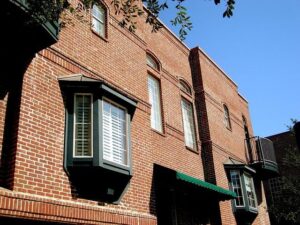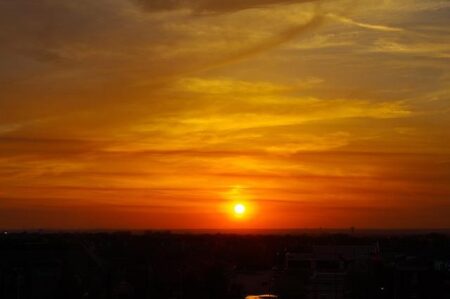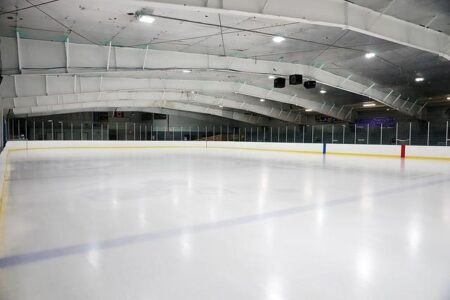Dallas Stars Arena Proposal Sparks Intense Debate Among Fans and Community
Community and Fan Concerns Over New Arena Location and Neighborhood Effects
As plans for a new Dallas Stars arena and adjacent entertainment district advance, a growing number of fans and local residents have voiced serious reservations. The opposition, often referred to as the ŌĆ£Blackout DallasŌĆØ movement, centers on worries about increased traffic congestion, displacement of long-established neighborhoods, and the pressure on existing infrastructure. Many community members argue that the chosen site overlooks critical issues that could degrade the quality of life and disrupt local businesses. Critics urge city leaders to prioritize sustainable urban development over large-scale commercial projects that may disproportionately benefit a limited group.
Key concerns raised in public discussions include:
- Environmental consequences stemming from construction activities and heightened pedestrian flow.
- Potential escalation in property taxes and rent, threatening affordability for vulnerable residents.
- Insufficient transparency and community involvement during the planning process.
- Possible negative impacts on existing local businesses due to competition from new entertainment venues.
| Issue | Community Concern | Suggested Mitigation |
|---|---|---|
| Traffic & Accessibility | Event-related congestion and limited public transit options | Enhance transit routes and implement advanced parking solutions |
| Neighborhood Displacement | Rising housing costs forcing out longtime residents | Introduce affordable housing programs and rent stabilization policies |
| Environmental Impact | Loss of green spaces and increased pollution | Adopt sustainable building practices and preserve parks |
| Community Engagement | Lack of meaningful public input | Host regular town halls and establish feedback mechanisms |
Analyzing the Economic and Environmental Dimensions of the Entertainment District
Supporters of the new arena emphasize its potential to stimulate the local economy by attracting visitors and generating employment. The project is projected to boost revenues for nearby restaurants, retail outlets, and hospitality services. Proponents also highlight the creation of thousands of jobs during construction and operation phases, alongside increased tax income to fund public services.
- Growth in sales for local businesses.
- Job opportunities in construction, hospitality, and event management.
- Additional municipal tax revenue to support community programs.
Nevertheless, detractors caution that the financial benefits may be overstated, pointing to concerns about the allocation of public funds and the risk of limited long-term economic gains.
| Aspect | Potential Outcome | Stakeholder Perspective |
|---|---|---|
| Employment | Up to 2,000 temporary and permanent positions | Advocates emphasize economic revitalization |
| Environmental Impact | Higher carbon emissions and increased traffic | Environmentalists stress sustainability concerns |
| Public Funding | Millions in subsidies potentially required | Debate over prioritizing other community investments |
From an ecological standpoint, the development raises red flags about increased pollution, waste production, and urban expansion. Residents worry that the strain on infrastructure and green areas could diminish overall livability. Environmental groups advocate for rigorous sustainability standards, including:
- Utilization of eco-friendly construction materials and energy-efficient designs.
- Expansion of public transportation to alleviate traffic congestion.
- Comprehensive waste reduction and recycling programs.
Official Responses: Highlighting the ProjectŌĆÖs Potential Advantages
City leaders have responded to the backlash by underscoring the comprehensive nature of the planning process and the anticipated benefits of the arena and entertainment district. They portray the development as a catalyst for economic growth, job creation, and enhanced cultural offerings. Officials envision the site as a vibrant, year-round destination that will attract tourists and enrich community life.
Outlined benefits include:
- Economic uplift: An estimated $300 million annual injection into the local economy.
- Employment: Creation of over 4,000 jobs spanning construction to long-term operations.
- Infrastructure improvements: New public transit routes and pedestrian-friendly urban design.
- Community spaces: Venues for public events, markets, and local art exhibitions.
| Benefit | Expected Outcome |
|---|---|
| Annual Economic Impact | $300 Million |
| Job Creation | 4,000+ Positions |
| Transit Enhancements | 5 New Routes |
| Community Venues | 3 Multi-purpose Spaces |
Strategies for Inclusive Planning and Strengthening Fan Involvement
To bridge the divide between stakeholders, it is crucial for planners and team management to adopt transparent, inclusive engagement strategies. Actively involving a broad spectrum of fans through town halls, digital surveys, and social media outreach can foster a collaborative atmosphere and ensure community perspectives shape the projectŌĆÖs evolution. Incorporating fan input into design elementsŌĆösuch as seating configurations, support for local businesses, and transportation planningŌĆöcan build trust and reduce opposition.
Innovative approaches to fan engagement might include:
- Virtual Reality (VR) experiences that immerse fans in game-day atmospheres.
- Exclusive digital memberships offering behind-the-scenes content and priority access.
- Partnerships with neighborhood organizations to promote local culture and commerce.
| Engagement Approach | Main Advantage | Expected Result |
|---|---|---|
| Public Forums & Surveys | Gather Diverse Feedback | More Accurate and Inclusive Planning |
| VR & Digital Innovations | Enhanced Fan Interaction | Higher Attendance and Loyalty |
| Community Collaborations | Support Local Economy | Stronger Community Backing |
Conclusion: Navigating the Path Forward Amidst Divergent Views
The ongoing debate surrounding the Dallas StarsŌĆÖ proposed arena and entertainment district underscores the complexities of urban development in a passionate sports city. The vocal opposition from a significant segment of fans and residents highlights the need to balance progress with preserving community values and traditions. As discussions continue, the challenge lies in finding common ground that aligns the franchiseŌĆÖs growth ambitions with the expectations and well-being of its dedicated fan base and the broader Dallas community.







